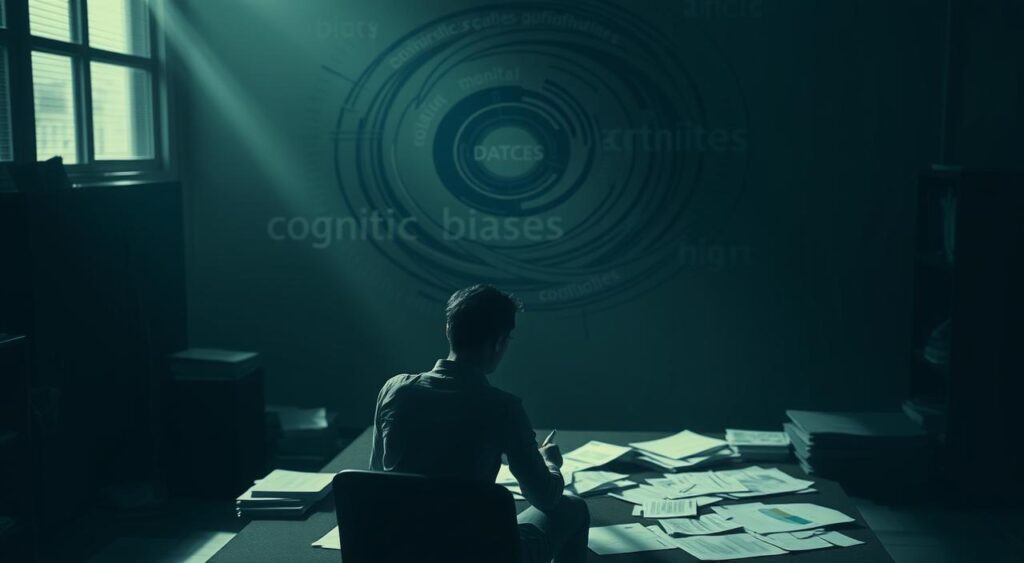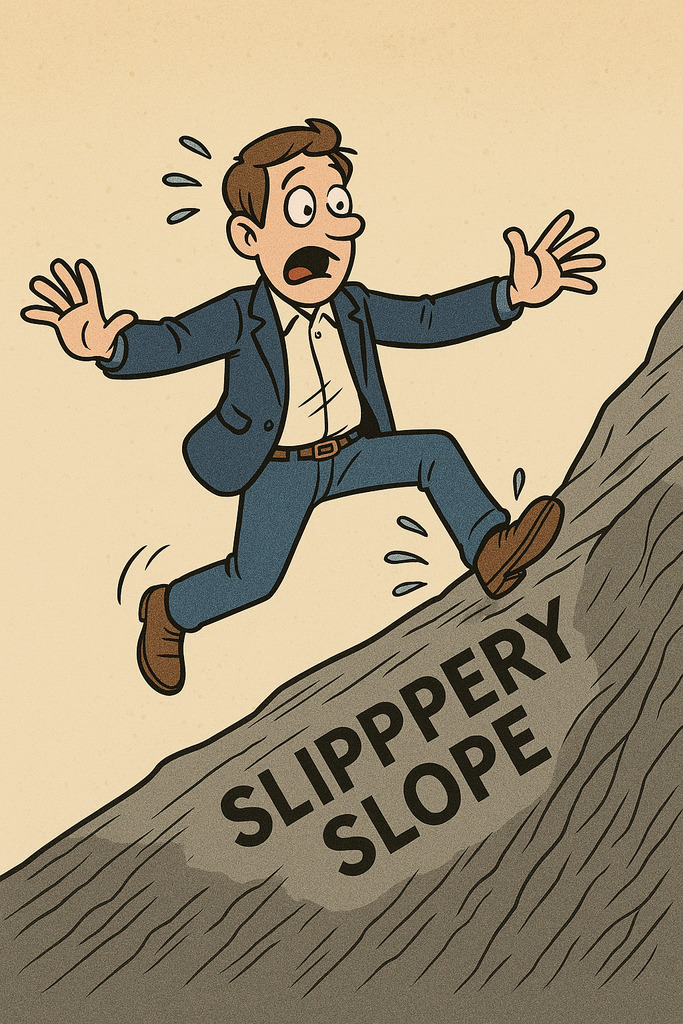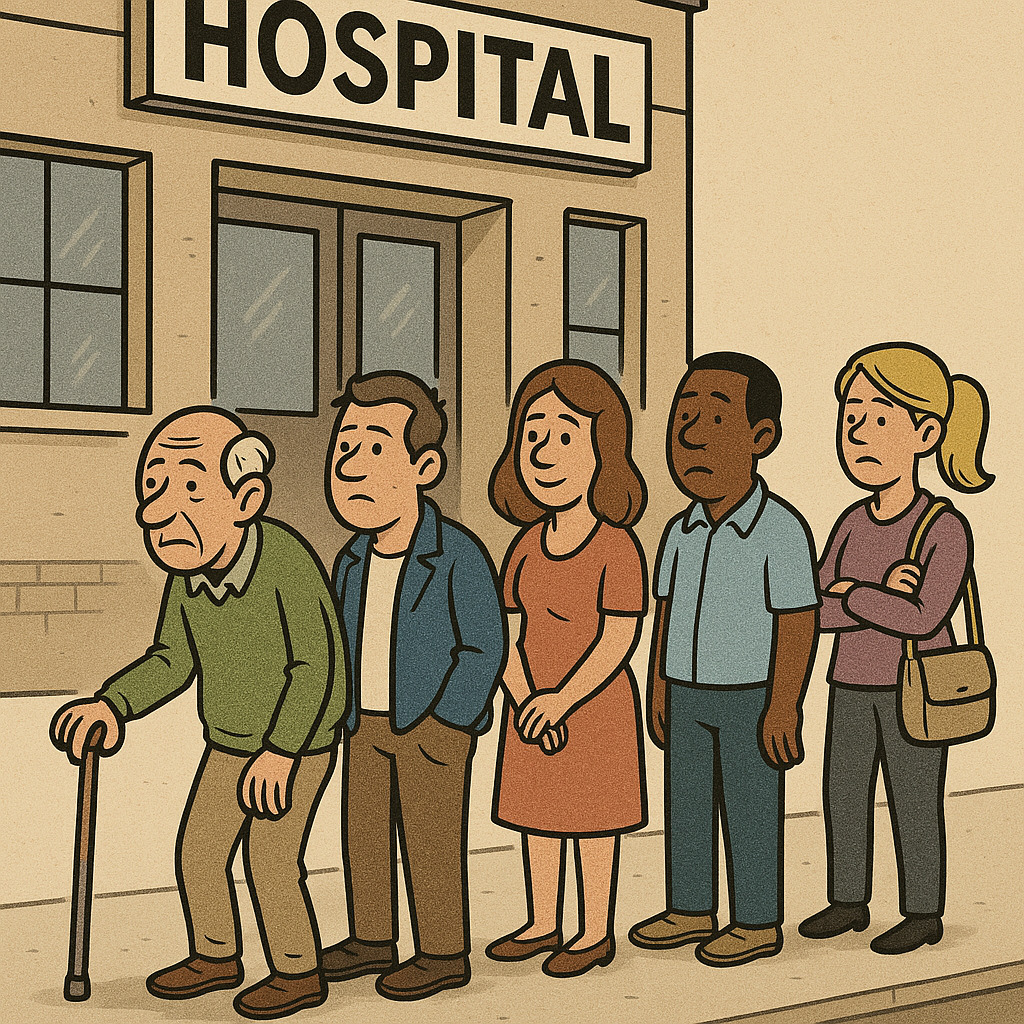Have you ever heard someone use casual language to make their argument seem more trustworthy? This tactic is part of the plain folks fallacy mental model—a thinking trap where people disguise weak claims as “common sense” to sway opinions. It’s like a magician distracting you with simple words while hiding flaws in their logic, a classic example of a logical fallacy.
Why does this matter? When someone says, “I’m just a regular person like you,” they might be avoiding facts. For example, politicians often use phrases like “hardworking Americans” to skip detailed evidence.
Even MMA fighters might downplay training science by saying, “Real fighters just work harder.” This is one way people can mislead others in arguments.
Mental models help us spot these tricks. They act like filters, letting us separate strong arguments from emotional appeals. Think of them as tools for cutting through noise in a world full of distractions. By the end of this article, you’ll see how this fallacy shows up in ads, debates, and even casual chats, raising important questions about the nature of argumentation.
Key Takeaways
- The plain folks fallacy uses relatable language to mask weak arguments in discussions about important topics.
- It often appears in politics, marketing, and sports discussions, showcasing how people can mislead others.
- Mental models sharpen your ability to detect hidden biases in the nature of arguments.
- Real-world examples make complex ideas easier to grasp, particularly when addressing climate change.
- Later sections will break down practical ways to avoid this trap in everyday life.
Mental Models and Logical Fallacies
Have you noticed how easily people accept claims that align with their existing beliefs? This happens because our brains use mental models—frameworks that help us process information quickly. Think of them like shortcuts for decision-making. But these shortcuts can sometimes lead us astray when they’re based on flawed assumptions.
Understanding the Role of Cognitive Patterns
Mental models shape how we interpret daily events. For instance, if you check the weather app before leaving home, you’re using a model to predict outcomes. But what happens when these patterns ignore facts? That’s where logical fallacies creep in. A common example is assuming correlation equals causation—like believing ice cream sales cause sunburns because both increase in summer.
The Intersection of Belief and Reasoning
Our beliefs often guide how we evaluate arguments. Imagine two people debating vaccines: one cites scientific studies, while the other shares a friend’s negative experience. Both think they’re logical, but personal bias influences their reasoning.
This blend of belief and logic forms the foundation of many cognitive errors. How often do you spot this in your own thinking?
By recognizing these patterns, we build better tools for analyzing claims. Upcoming sections will show how to apply this awareness to real-world scenarios—from social media debates to workplace decisions.
Defining Mental Models in Everyday Thought

How do you explain riding a bike to someone who’s never tried? You might describe pedaling and steering—but that’s just the explicit knowledge. The real skill comes from hours of wobbling and correcting, which forms tacit knowledge. These two types of understanding shape how we build expertise in any field.
Explicit Versus Tacit Knowledge
Explicit knowledge is like a recipe—clear steps you can write down. A tennis coach might teach proper grip techniques using diagrams. Businesses create checklists for customer service calls. But this theory only covers part of the story.
Tacit knowledge lives in your muscles and instincts. MMA fighters don’t win fights by memorizing a list of moves—they react faster than conscious thought allows. Similarly, seasoned managers read team dynamics without formal training.
Ever known all the rules of a game but still struggled to play well? That gap shows why practice drives real change. You can’t master negotiation strategies through textbooks alone—you need awkward conversations and subtle adjustments.
True expertise blends both forms of learning. Think of explicit knowledge as map directions and tacit knowledge as the feel of the road under your tires. Which one has helped you more in your daily decisions?
Building reliable mental models takes time—like learning a language through immersion rather than flashcards. Next time someone offers quick fixes, ask for the evidence behind their advice.
Explore The Plain Folks Fallacy Mental Model

Picture a debate where someone swaps complex facts for folksy phrases like “everyone knows” or “real people think.” This tactic thrives on relatability over evidence. Unlike the straw man fallacy—which twists an opponent’s argument—this approach avoids engagement altogether by pretending complexity doesn’t exist.
Why is The Plain Folks Fallacy Mental Model Unique?
Consider a politician claiming, “Hardworking families want simple solutions, not fancy theories.” The action here isn’t lying—it’s framing weak ideas as universal truths. Why say “common sense” instead of citing facts or data? Because emotional resonance often beats logic in public opinion, appealing to the way people think.
Unlike the slippery slope fallacy (predicting extreme outcomes), this fallacy hides behind humility. It asks you to trust the speaker as an ordinary person, not the strength of their idea.
Remember when a city council member dismissed climate reports by saying, “My neighbors care about today’s bills, not future graphs”? This raises a question about the things we prioritize in life.
Simple language becomes problematic when it replaces valid source material. Could this way of speaking explain why bad policies sometimes gain traction?
The answer lies in recognizing when relatability crosses into manipulation. In this world, one must question the reasons behind such communication tactics.
Next time you hear “I’m just being honest,” ask: Where’s the proof hiding behind those plain words? Remember, in every argument, there’s a piece of truth that must be true.
Cognitive Biases in Shape Our Perceptions

Imagine choosing between two products. One has glowing reviews from “people like you,” while the other shows lab-tested results. Which feels more convincing? This tug-of-war reveals how cognitive biases steer decisions without us noticing. These mental shortcuts help us navigate life quickly—but often inaccurately.
Biases That Influence Decision-Making
Take confirmation bias. We favor information matching our existing views. A parent might dismiss vaccine studies because their cousin’s friend had a bad reaction. In practice, personal stories often outweigh facts—even when evidence is thin. This highlights how humans often prioritize emotional appeal over objective reasoning.
Another example? The anchoring effect. If a salesperson says, “Most people choose the premium package,” you’re anchored to that option. Suddenly, mid-tier plans seem less appealing—even if they better fit your needs. This is a classic form of fallacy in decision-making.
How often have you stuck with a choice just to avoid admitting you were wrong? That’s sunk cost fallacy in action. Life’s full of these hidden nudges. Ever bought something because it felt “meant to be”? Emotional appeal often trumps reason, making it a common thing in our daily lives.
To build stronger arguments, start by spotting these patterns. Ask: “What proof exists beyond personal stories?” Check sources. Compare data. Small steps help separate fact from feeling, and it’s one thing that must be true in any debate.
Ready to see how biases connect to bigger reasoning errors? Later sections will reveal why even smart people fall for flawed logic—and how to stay grounded.
Dissecting Logical Fallacies

Ever watched a debate spiral into chaos over unrelated topics? That’s often the work of logical fallacies—errors in reasoning that twist arguments and form a part of the way people communicate.
These hidden traps derail discussions, replacing facts with emotional appeal or distractions. Learning to spot these fallacies helps you stay focused on truth and question the ideas presented.
Common Fallacious Arguments in Debate
Take the straw man tactic. Someone misrepresents your argument to make it easier to attack. Imagine a city council member arguing against bike lanes by claiming opponents “hate progress.” That’s not the real issue—it’s a distorted version of the facts.
Another favorite? The slippery slope. “If we allow free college, next they’ll ban private schools!” This leap assumes one step must truely lead to extremes without proof. It’s like predicting rain because you saw a cloud. In the course of debate, these things can derail a person’s reasoning.
| Fallacy Type | Definition | Real Example |
|---|---|---|
| Straw Man | Distorting an opponent’s argument | “They want open borders!” (response to immigration reform) |
| Red Herring | Introducing irrelevant topics | Diverting climate talk to “politicians fly private jets” |
| Slippery Slope | Assuming extreme chain reactions | “Legalizing marijuana will increase heroin use” |
Understanding Red Herrings and Straw Men
Red herrings shift focus like a magician’s trick. During a policy debate, a senator once asked, “Why discuss taxes when crime rates are rising?” The common tactics here aim to confuse, not clarify.
Even skilled speakers stumble. A CEO might dismiss safety concerns by saying, “Our competitors have worse records.” That’s deflection—not a solution. Sound familiar?
Next time discussions go sideways, ask: Are we addressing the core issue or chasing distractions? A single careless word can turn productive talks into verbal mazes.
Practice and Building Mental Models

What separates a tennis coach’s playbook from championship-winning serves? The answer lies in action. Think about the Inner Game of Tennis—players don’t master backhands by reading manuals alone. They learn through thousands of swings that rewire their instincts.
Experience Versus Theoretical Learning
MMA fighters show this best. You can memorize every submission hold, but real skill comes from sparring.
One wrong move teaches more than a week of diagrams. Ever tried explaining how to ride a bike? Words capture only part of the truth—balance comes through wobbling, a fact that many people overlook.
Books give maps. Practice walks the terrain. A tennis pro might use theory to adjust their grip, but match pressure reveals what works. This gap between knowledge and doing explains why some experts struggle to teach beginners, raising the question of how to effectively communicate ideas.
Here’s the key: Wisdom grows through repetition. A person studying negotiation tactics still needs awkward conversations to build intuition. Over time, patterns emerge that no textbook predicts, and the reason lies in the way real-life experiences shape understanding.
So—do drills teach more than lectures? Share your thoughts. Whether it’s sports or decision-making, lasting mastery blends study with sweat, and this must be true for anyone pursuing their goals.
Practical Examples of The Plain Folks Fallacy

Ever heard a leader say “I’m just like you” during a heated debate? This tactic often hides weak arguments behind down-to-earth language. Let’s explore how this plays out in real situations where evidence takes a backseat to emotional appeals.
Real-World Case Studies
During the 2020 election cycle, a candidate dismissed climate policy details by stating: “Hardworking families care about grocery prices, not carbon charts.” The argument avoided data while framing opponents as out-of-touch elites. Another example: A senator once claimed “real Americans want simple solutions” when defending a tax plan lacking economic analysis.
Media narratives often follow this pattern too. A talk show host recently argued against healthcare reforms by saying: “My neighbor’s cousin waited months for surgery in Canada.” Personal stories become substitutes for broader fact-checking. How many policy decisions get made this way?
Implications in Political Discourse
When leaders use phrases like “common sense fixes,” ask: Where’s the source material? Relatable language works best when paired with verifiable information. Without proof, these examples create false consensus. Voters might assume policies are widely supported—even when data shows mixed opinions.
| Example | Fallacy Used | Evidence Status |
|---|---|---|
| “This policy helps everyday people” | Appeal to relatability | No supporting data provided |
| “Parents know what’s best for schools” | Assumed universal agreement | Ignores educator input |
| “Real workers don’t need safety regulations” | False representation | Contradicts OSHA reports |
Why does this matter? When others frame complex things as “obvious,” it shuts down critical discussion. Next time you hear folksy reasoning, pause. Ask for numbers, studies, or comparisons. Strong ideas withstand scrutiny—with or without homespun charm.
Plain Folks Fallacy vs Other Logical Fallacies

Ever been in a debate where personal attacks replaced real arguments? Logical fallacies often twist discussions in a way that obscures the facts, but they work differently.
Let’s unpack three common errors: plain folks, ad hominem, and appeal to popularity. These fallacies can mislead people by presenting flawed reasoning as if it were a must true argument.
Ad Hominem: Attacking the Person
This fallacy targets someone’s character instead of their argument. Imagine dismissing climate science by saying, “She drives an SUV—why trust her?” It shifts focus from facts to flaws in a way that questions the reasoning behind the idea.
Unlike folksy appeals, ad hominem uses insults as weapons to divert attention from the actual argument, impacting how people perceive the situation and the validity of the reasoning. This form of argument can distort the way things are understood and can lead to misunderstandings about the facts involved.
Appeal to Popularity: Following the Crowd
“Everyone’s doing it” arguments rely on social proof, not evidence. A company might claim, “10 million users can’t be wrong!” But popularity doesn’t equal truth.
This differs from plain folks tactics, which use relatable language to mask weak fallacy and argument in a way that questions the reason behind the thing being discussed.theory.
| Fallacy | Focus | Example | How to Spot |
|---|---|---|---|
| Plain Folks | Relatability over proof | “Real Americans want simple fixes” | Lacks data, uses “common sense” |
| Ad Hominem | Personal attacks | “You’re too young to understand” | Insults replace counterarguments |
| Appeal to Popularity | Group consensus | “Most parents agree with me” | Cites numbers without sources |
Notice how each logical fallacy avoids evidence? Straw man and red herring tactics also divert attention. One twists your words, while the other introduces random things.
Have you spotted these fallacies in recent conversations with people? Recognizing them helps you question arguments and steer debates toward facts—not distractions.
Role of Evidence and Fact-Based Reasoning

Think about the last time you changed someone’s mind. Did you share feelings—or facts? Strong arguments act like bridges between ideas, but they need solid pillars of proof. Without evidence, even clever words crumble under scrutiny.
Supporting Claims With Data
Finding reliable evidence starts with asking: “Where did this information come from?” Peer-reviewed studies beat anonymous blogs. Government reports often trump social media posts.
A politician claiming “unemployment is down” should cite labor statistics—not just crowd applause. This question of source credibility is crucial in any argument to avoid the pitfalls of fallacy.
Look at sports debates. When analysts argue about the “best quarterback,” stats like pass completion rates settle disputes faster than opinions. Numbers cut through bias.
They answer questions objectively, appealing to fact over mere word of mouth, ensuring a fair assessment rather than a subjective list of personal preferences.
| Argument Type | Evidence Used | Strength Level |
|---|---|---|
| “Tax cuts help everyone” | Income growth charts | High (if data matches) |
| “This supplement works” | Customer testimonials | Low (no trials) |
| “Team X will win the series” | Win-loss records | Medium (past ≠ future) |
Ever noticed how lists of “expert tips” often lack sources? Next time you see one, ask: “Where’s the research backing this?” Reliable answers come from verified results—not just catchy phrases.
What course of action do you take when forming opinions? Start by separating anecdotes from analysis. Your neighbor’s story about car repairs might be true—but mechanics’ surveys paint the full picture.
How To Build and Share Mental Models

How do master chess players make split-second decisions? They’ve internalized patterns through years of play. Warren Buffett doesn’t just read financial reports—he compares companies to action heroes, asking: “Would this business survive a zombie apocalypse?”
His mental models turn complex data into relatable stories that appeal to the person making the argument. Each fact considered helps avoid fallacies in reasoning.
Lessons From Experienced Professionals
MMA champions drill moves until reactions become automatic. Coach Firas Zahabi once said, “You don’t think about blocking a punch—you just do it.” This tacit knowledge comes from sparring, not textbooks. Similarly, Buffett’s annual letters simplify investing theory using everyday analogies like “moats” and “margin of safety.”
Translating Tacit Knowledge Into Action
Great coaches show more than tell. Tennis legend Tim Gallwey taught serves by saying, “Hit the ball like you’re tossing a water balloon.” He turned abstract ideas into physical sensations. When experts struggle to explain their position, they often demonstrate.
Ever tried copying a chef’s knife skills? Mimicking motions builds muscle memory faster than lectures, turning a complex form of knowledge into a simple fact. This process helps avoid any fallacy in the argument about effective learning.
| Learning Method | Theory | Practice |
|---|---|---|
| Investing | Financial ratios | Buffett’s “circle of competence” |
| MMA | Submission techniques | Sparring reactions |
| Coaching | Play diagrams | Live drills |
Why do some professionals excel at teaching? They bridge the gap between knowing and doing. As chef Jacques Pépin says, “You learn to chop onions by cutting onions—not watching videos.” Lasting expertise blends useful frameworks with real-world repetition. What skill could you master by blending study with sweat?
Pitfalls of Non-Practitioner Perspectives

Have you ever followed advice that sounded smart but didn’t work in real life? Non-practitioners often share theories that crumble under pressure. Like getting diet tips from someone who’s never meal-prepped—it might sound logical but misses crucial details.
Insights Lost in Translation
Business consultants sometimes push strategies they’ve never used. Imagine a speaker teaching negotiation tactics but avoiding tough client talks themselves. Their lack of field experience leads to generic advice that fails when stakes rise.
Second-hand knowledge loses nuance. A parenting blogger might share sleep training methods from books—but real parents know every baby reacts differently. Abstract theories can’t predict midnight meltdowns or growth spurts.
| Scenario | Practitioner Insight | Non-Practitioner Advice |
|---|---|---|
| Fitness Coaching | Adjusts workouts for injuries | “Just do more reps!” |
| Business Growth | Tests marketing channels | “Post on all social platforms” |
| Conflict Resolution | Reads body language cues | “Just communicate better” |
Why do people make these errors? Without hands-on change, theories stay untested. A chef who only reads recipes won’t know how oven quirks affect baking times. Real mastery comes from doing—not just studying.
Next time someone offers advice, ask: “Have you tried this yourself?” Evidence-backed guidance beats well-meaning guesses every time.
Mental Models and Debating Techniques

How do you keep debates productive when tensions rise? The answer lies in pairing mental frameworks with disciplined communication. Imagine a teacher explaining climate science to skeptics—they simplify complex ideas without dumbing them down. This balance separates heated shouting matches from truth-seeking conversations.
Strategies for Clear Communication
Start by replacing technical words with everyday language. Instead of saying “cognitive dissonance,” try “conflicting thoughts.” Use numbered lists to structure points: 1) State your position 2) Share evidence 3) Explain relevance. This approach keeps arguments tight and scannable.
Ever noticed how rambling weakens credibility? Set a 30-second rule: If you can’t summarize your stance in half a minute, refine it. Ask yourself: “Would a 12-year-old grasp this?”
Avoiding Fallacious Reasoning in Argument
Strong debaters spot traps before stepping in. When someone says, “Everyone agrees…,” counter with: “Can we see survey data?” Create a mental checklist:
| Solid Argument | Weak Argument |
|---|---|
| Uses verified statistics | Relies on “I feel” statements |
| Addresses counterpoints | Dismisses opposing views |
Stay on-topic like a GPS recalculating routes. If discussions veer into personal attacks, reset with: “Let’s revisit the core issue.” What techniques have you used to ensure your argument makes sense?
Remember: Clear thinking wins more converts than clever comebacks. Does this approach align with how you handle tough conversations?
Learning From Other Professional Disciplines

What separates textbook knowledge from championship-level execution? The answer lies in tacit knowledge—the unspoken skills gained through real-world practice. From tennis courts to boardrooms, professionals rely on instincts forged through repetition, not just theory.
Insights from the Inner Game of Tennis
Coach Tim Gallwey revolutionized tennis training by focusing on feel over mechanics. Instead of saying “bend your knees more,” he’d advise: “Listen to the ball’s rhythm.” Players improved faster by trusting their bodies rather than overthinking steps. This approach mirrors how experts in any field internalize complex skills.
How MMA Illustrates Tacit Knowledge
MMA fighters don’t win matches by memorizing manuals. During sparring, they develop split-second reactions no video can teach. As coach Firas Zahabi notes: “You block punches before you consciously see them.” This automatic response comes from thousands of hours adapting to unpredictable scenarios.
| Field | Theory | Practice-Based Skill |
|---|---|---|
| Tennis | Swing mechanics | Reading opponent’s stance |
| MMA | Submission techniques | Countering unexpected moves |
| Business | Negotiation frameworks | Reading room dynamics |
Can you see how sports training teaches life lessons? A climate scientist adjusts strategies based on field data, much like athletes tweak techniques mid-game. Real mastery blends study with adaptation.
Whether you’re perfecting a serve or leading teams, lasting success comes from doing—not just knowing. What skill could you strengthen by swapping theory for action today?
Misconceptions About Mental Models and Fallacies
How often do smart ideas fail in real life? Many believe knowing a theory automatically makes them skilled—like memorizing chess rules but losing every match. Let’s bust three myths about thinking frameworks:
| Myth | Reality | Fix |
|---|---|---|
| “Complex models work best” | Simple tools often outperform fancy ones | Use checklists for daily decisions |
| “Fallacies only fool others” | Everyone has blind spots | Record your debates to spot patterns |
| “Knowledge equals action” | Practice drives real change | Role-play tough conversations weekly |
Ever trusted a strategy that flopped? A sales team once studied negotiation tactics but kept losing deals. Their mistake? They skipped mock talks. Books can’t teach how sweat feels on your palms during high-stakes moments.
Here’s the fix: Pair learning with doing. If you study conflict resolution, host a family debate night. Track what works. Adjust your approach like a coach reviewing game footage.
True growth comes from testing ideas in messy reality. What outdated belief will you challenge this week? Start small—even a 10-minute daily reflection can reshape your course of thinking.
Detect and Counteract Logical Fallacies

How do you respond when someone shifts the topic during an important discussion? Spotting flawed reasoning starts with recognizing common patterns. Let’s explore practical ways to strengthen your critical thinking and keep debates focused on facts.
Improving Critical Thinking Skills
Start by asking two questions: “What’s the main claim?” and “Where’s the evidence?” For example, if a friend argues “Everyone knows diet soda causes cancer,” request studies from reputable sources. This separates opinions from verified data.
Create a mental checklist for arguments:
- Does this avoid emotional appeals?
- Are there stats or expert quotes?
- Could this be a red herring distraction?
| Strong Argument | Weak Argument |
|---|---|
| Cites peer-reviewed research | Uses “I heard from a friend” |
| Addresses counterpoints | Attacks the speaker’s credibility |
Effective Debate Tactics
When discussions veer off track, reset with: “Let’s revisit the original point.” If someone uses a straw man, clarify: “That’s not my position—here’s what I actually said.” For slippery slope claims, ask: “What proof links these events?”
Practice the Socratic method. Ask short questions to expose gaps:
- “How does that example prove your case?”
- “Can you share the source of those numbers?”
- “What would change your mind?”
One coffee shop debate showed this in action. A customer claimed “Tax cuts always boost economies.” Another asked: “Which decade’s data supports that?” The conversation quickly moved from opinions to historical evidence.
What step will you take today to sharpen your reasoning? Try analyzing one news headline using these tools. Lasting skills grow through daily practice—not overnight fixes.
Conclusion
We’ve explored how simple phrases can mask weak arguments—like calling ideas “common sense” instead of showing proof. Recognizing these patterns helps us separate genuine reasoning from emotional shortcuts.
Whether in politics or daily life, strong debates thrive on facts, not just relatable language. This is crucial when discussing complex issues like climate change.
Here’s the takeaway: Listen for claims that rely on “most people” statements without data. Value experts who demonstrate skills, not just theories.
Learning to spot these traps, such as the red herring fallacy, is a lifelong practice—like sharpening a tool you use daily.
What one thing can you change today? Maybe pause next time someone says “everyone knows.” Ask: “Where’s the evidence?” Small habits build clearer thinking over time, allowing us to dissect arguments and understand the nature of the claims made.
Truth thrives when we stay curious. Keep questioning, keep verifying, and watch how your world of understanding expands. Ready to turn these insights into action? Your next conversation could be the perfect test run.


